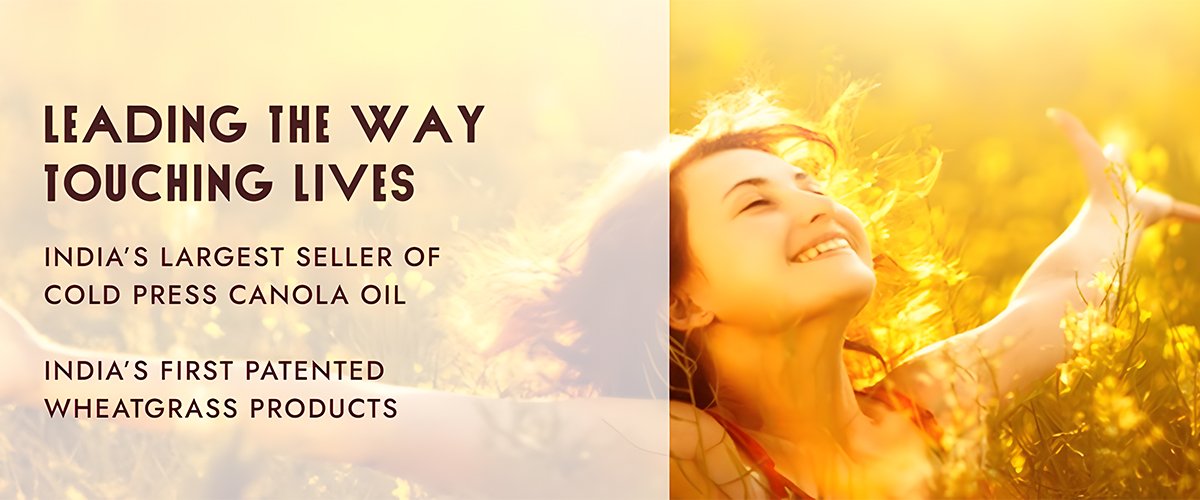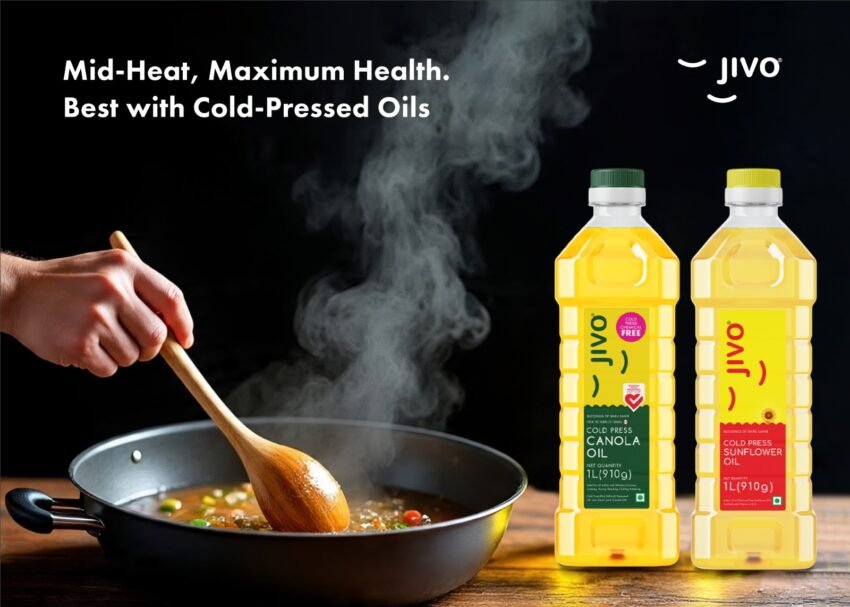A Chef’s Secret to Healthy Cooking
As an Indian chef, I’ve learned that the true magic of a meal isn’t only in the spices you use, but also in how you treat them in the pan. Did you know that high-heat frying can destroy up to half of the nutrients in your favourite dishes? When you cook at very high temperatures, many vitamins and antioxidants break down or evaporate, leaving your food less nourishing. That’s why I prefer mid-heat cooking, keeping the stove between 120–175°C (250–350°F).
In 2025, Indian home cooks are embracing this method to keep meals wholesome and delicious. Mid-heat cooking locks in vitamins, enhances flavours, and cuts down on harmful compounds, making it perfect for health-conscious kitchens. From my kadhai to yours, I’ll share why mid-heat cooking is a game-changer, its health benefits, practical tips, and how Jivo cold-pressed oils elevate your dishes. Let’s get cooking!
Understanding Mid-Heat Cooking
In my kitchen, mid-heat cooking is like conducting a symphony—it balances flavour, texture, and nutrition. It’s the sweet spot of 120–175°C, perfect for simmering dal, cooking sabzi on a tawa, or sautéing masalas. Unlike high-heat methods like deep-frying pakoras, which can burn nutrients, or slow-cooking, which takes hours, mid-heat is quick yet gentle. It lets spices bloom and veggies stay vibrant. For example, when I cook aloo gobi on medium heat, the potatoes stay tender, and the cauliflower keeps its crunch. Mid-heat cooking methods are gaining traction in Indian kitchens for their ability to create healthy, flavourful meals that feel like home. It’s my go-to for everyday desi dishes!
Why Mid-Heat Cooking Is Healthier
As a chef, I’ve seen how cooking methods can make or break a dish’s health factor. Mid-heat cooking is a winner for Indian cuisine. It preserves nutrients like vitamin C in greens or B vitamins in dal, which high-heat frying can zap. A 2023 study found that simmering spinach retains 80% of its vitamin C, compared to 50% when boiled at high heat. It also avoids harmful compounds like acrylamide or AGEs (advanced glycation end products) that form when oil overheats in a kadhai. Plus, it uses less oil, keeping your meals light. Here’s why I prefer low-heat cooking:
- Nutrient-Rich: Retains vitamins and antioxidants in your sabzi and dal.
- Safer Cooking: Skips toxic byproducts from high-heat frying.
- Heart-Friendly: Less oil means fewer calories and no trans fats.
- Mid-heat cooking brings health and taste together on your plate.
Get The Chef’s Special Palak Paneer Recipe !
Here is a recipe for you to try out
Sautéed Palak Paneer with Jivo Canola Oil
Ingredients:
- 200g spinach (palak), washed and chopped
- 100g paneer, cubed
- 1 tbsp Jivo cold-pressed canola oil
- 1 tsp cumin seeds, 1 onion (chopped), 1 tsp ginger-garlic paste, 1/2 tsp turmeric, salt to taste
Steps:
- Heat Jivo canola oil in a kadhai on medium heat (150°C).
- Add cumin seeds; let them splutter for 30 seconds.
- Add onion and ginger-garlic paste; sauté for 2–3 minutes until golden.
- Toss in spinach, turmeric, and salt; cook for 5–7 minutes until wilted.
- Add paneer, stir gently, and cook for 2 more minutes. Serve hot with roti.
Jivo cold-pressed oils are the best choice for mid-heat cooking, making Indian meals healthier and tastier.
Tips to Master Mid-Heat Cooking at Home too
Mid-heat cooking is a breeze, even for busy Indian kitchens. Keep your tawa or kadhai at 120–175°C—use a thermometer if you’re new to it. Simmer dals gently to lock in flavor, or sauté masalas on medium heat to avoid burning spices. Don’t overcook; let veggies like bhindi stay crisp. My tips for you:
- Get a non-stick tawa or kadhai for even heat distribution.
- Use a timer to avoid overcooking delicate ingredients like palak.
- Stir often when sautéing to keep spices fragrant.
- Try simmering curries instead of boiling for richer taste.
These mid-heat cooking techniques are perfect for Indian dishes. Start with a simple sabzi tonight, and you’ll taste the difference in health and flavour!
Best Oils you need for Mid-Heat Cooking
A chef’s secret weapon? The right oil. For mid-heat cooking, Jivo cold-pressed oils are my top choice for Indian dishes. Their high smoke points and pure flavours make them ideal for 120–175°C cooking, keeping nutrients intact. Jivo cold-pressed canola oil is perfect for sautéing palak paneer, letting the spinach’s vitamins shine. Jivo mustard oil adds a pungent kick to aloo gobi on the tawa. For parathas, Jivo groundnut oil gives a nutty depth without harmful compounds. Try this recipe:
Cook Smarter, Eat Healthier
As an Indian chef, I’m hooked on mid-heat cooking—it’s the heart of wholesome, flavourful meals. By cooking at 120–175°C, you keep nutrients in your dal, sabzi, and parathas while avoiding harmful compounds. It’s perfect for health-conscious Indian families in 2025. With Jivo cold-pressed oils, you can elevate every dish, from aloo gobi to palak paneer, with ease. Try one mid-heat recipe this week—maybe my palak paneer—and share your kitchen wins in the comments. Let’s cook healthy, desi-style, and savor every bite!

